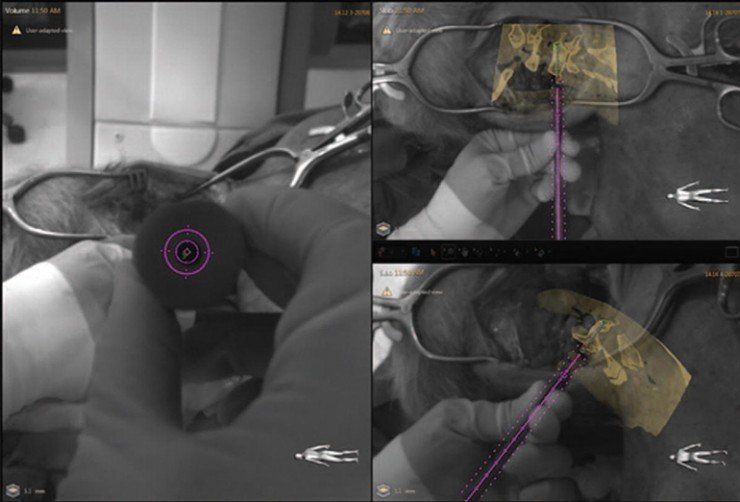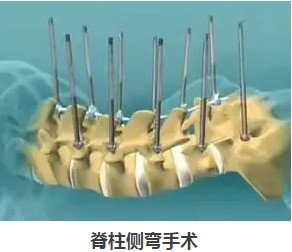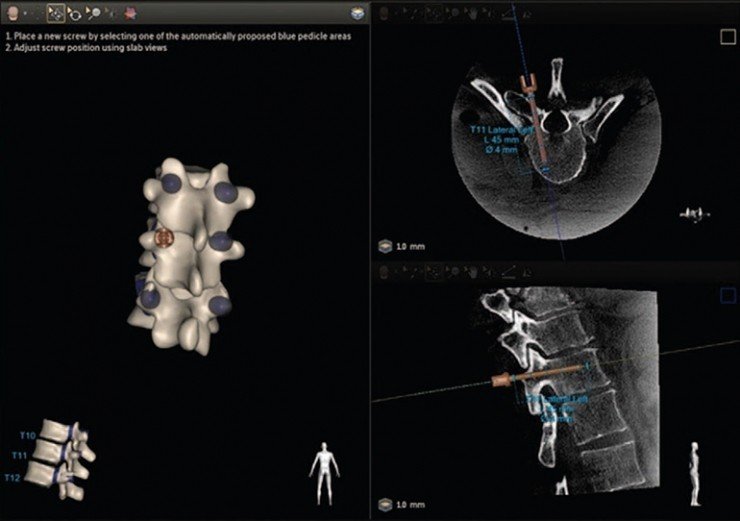It is said that the only constant change in the world is that natural, all-encompassing Philips has now changed. Some of them are not only electric toothbrushes and razors, but health and medical care have become their most profitable business. In the official website's introduction, Philips's health business has occupied 42% of the company's revenue.
According to news, on January 12, Philips announced a new breakthrough in "funny" surgical navigation technology - the "VR" function. This technique has been applied in minimally invasive spine surgery in their composite operating room.
The following figure is the "VR" view presented by the Philips Surgical Navigation System. Is it possible to add a picture to a 3D image?

Smart surgery to insert a nail into the spine
Minimally invasive spine surgery means avoiding large incisions under certain medical risks, using tiny incisions or puncture channels, and using special instruments and devices to navigate from normal anatomical structures under the supervision of imaging instruments or navigation techniques. Using a variety of miniature manual or electric instruments and equipment, complete the entire surgical process under visual conditions to achieve a smaller than traditional or standard spinal incision, less tissue trauma, less bleeding, high accuracy, and positive results. The purpose of rapid postoperative recovery is.
Minimally invasive surgery because of the small surgical incision, imaging, imaging technology requirements are high. These technologies are required not only to vividly show what doctors do not see but need to see, but also to provide a clear view of the surgical field, which in turn allows doctors to observe subtle aspects that are difficult to detect in traditional surgery.
Because of the increasing number of patients who need surgical treatment for spinal diseases, it is common to use spinal implants. The most representative pedicle screw technique has been popularized in major hospitals.
Because the spine is the most dense part of the body's blood vessels and nerves, once the orientation of the nail is misaligned, it may accidentally injure the nerves and blood vessels, and may even cause severe spasms. Therefore, the accuracy of implants is one of the main reasons for errors in spine surgery. Even experienced doctors operate with hands, it is inevitable that deviations will occur.
In this context, the spinal surgery navigation system has been greatly promoted. The system can allow doctors to clearly know the current operation status and the next step in positioning, avoid operation and positioning errors, and significantly increase the complexity of spinal surgery and implants. The success rate of entry.
It can be understood that, in the past, doctors “nailed†near the spine, just like walking a labyrinth, which could accidentally injure nerves, blood vessels, or even paralysis. As soon as the artifact is launched, it is like having a car with navigation, planning the best surgical route, accidentally hitting nerves, and the electric wave will be reflected immediately.

Philips' VR technology - just add a camera?
Philips' Spine Surgical Navigation System works by combining an optical position tracking system with a fluorescent CT to achieve real-time 3D navigation. The CT information will be transmitted to a computer workstation for 3D reconstruction, image matching, image fusion, etc. Meanwhile, positioning technology will be used to dynamically track the surgical instrument and the current position of the patient's anatomical position in the surgical process, and it will be displayed on the CT image of the patient in real time. The doctor can observe the current surgical approach and various parameters (angle, depth, etc.) from various directions through the display screen. On the basic working principle, it is consistent with the principles of other computer navigation systems on the market.
However, the feature that Philips introduced this time is its "VR" function, that is, attaching a camera to a fluorescent CT, taking a picture while taking a CT, and further, combining the patient's anatomical image captured by the camera with the three-dimensional imaging of the fluorescent CT to generate High-resolution output. In theory, this will allow the surgeon to more clearly know where he placed the pedicle screw, and at the same time ensure the accuracy of the placement of the screw into the pedicle via 3D navigation.

The actual use of this technology does not require wearing any head-mounted holographic display.
Early feasibility studies showed that when surgeons performed open surgery on the body and the new technique was applied, the accuracy of surgery rose to 85%, compared with 64% for unarmed operation.
However, people in the industry also questioned that in the minimally invasive surgery, even if its AR function is indeed better than the conventional 3D navigation technology, in actual patient surgery, Philips needs to consider the patient's activities, such as breathing and general vibration, May have an impact on optical tracking. This is a big challenge for the system.
Electronic Wire Harness,Double-Ended Terminal Wires,Quick Terminal Wire,Color Plate Wire
Dongguan ZhiChuangXing Electronics Co., LTD , https://www.zcxelectronics.com